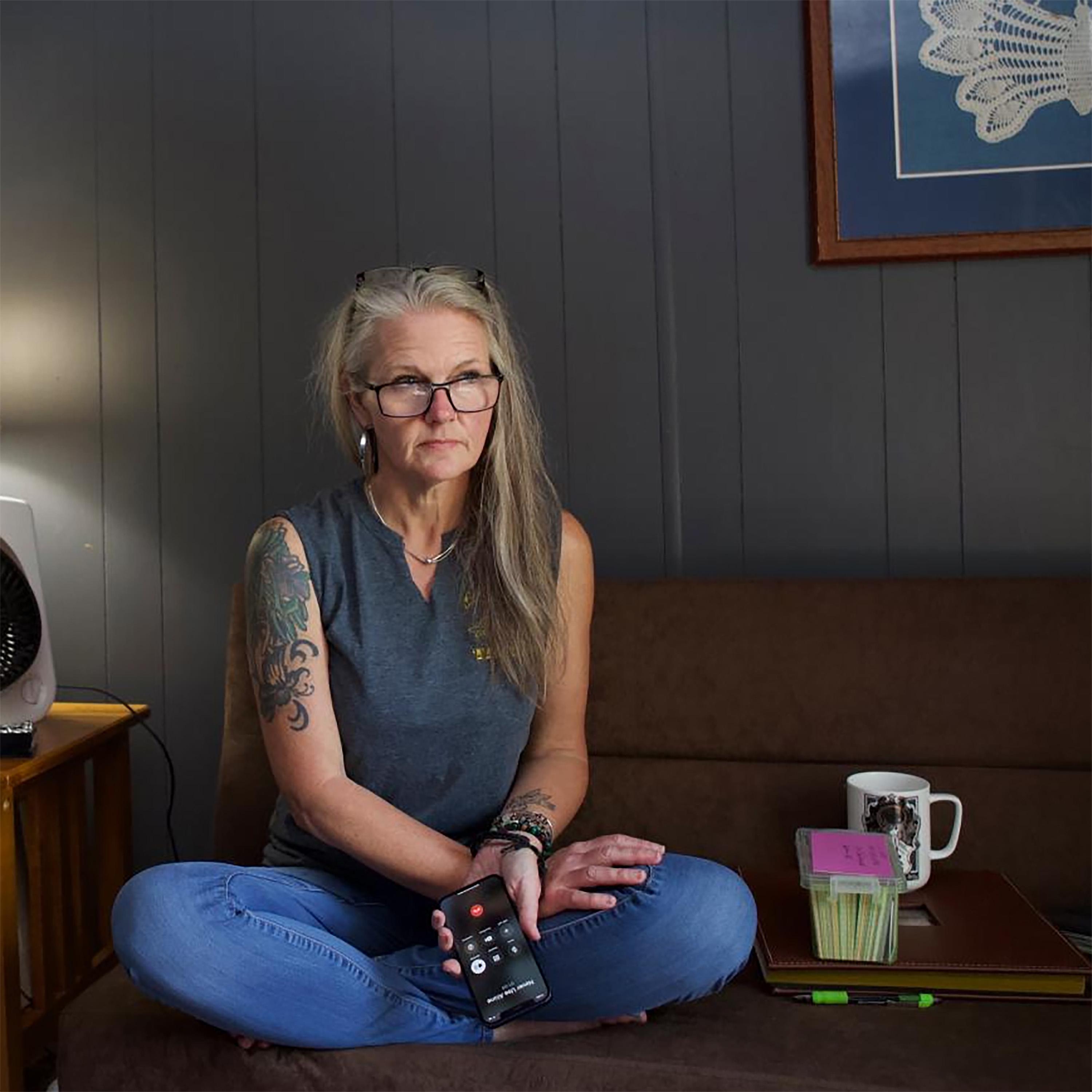
Deep Dive
What is the purpose of the Never Use Alone hotline?
The Never Use Alone hotline is designed to help drug users who are using substances like heroin or speedballs alone. An operator stays on the line to ensure the caller is safe and can call paramedics if an overdose occurs. Its primary goal is to keep people alive, not to push them into sobriety or treatment.
Why did Kimber call the Never Use Alone hotline?
Kimber called the Never Use Alone hotline because she had received a card with the hotline's number from a needle exchange program. She was using heroin alone and wanted someone to stay on the line in case she overdosed.
What happened during Kimber's call to the Never Use Alone hotline?
During Kimber's call, she injected heroin while on the phone with Jessie, the operator. Jessie monitored her and, when Kimber became unresponsive, called 911. Paramedics arrived within minutes and revived Kimber using Narcan.
How did Stephen, the paramedic, feel after reviving Kimber?
Stephen felt deeply emotional after reviving Kimber, especially when he learned she had called the Never Use Alone hotline. He cried with Jessie, the operator, realizing the hotline had worked to save Kimber's life. This experience reinforced his belief in the importance of ensuring drug users are not left alone.
What is Jessie's personal connection to the Never Use Alone hotline?
Jessie's personal connection to the hotline stems from her daughter, Kaylin, who has overdosed multiple times. Jessie's experience with her daughter's addiction led her to adopt a harm reduction approach, focusing on keeping people alive rather than pushing them to stop using drugs.
What is the significance of the Never Use Alone hotline in the context of the overdose crisis?
The Never Use Alone hotline addresses the overdose crisis by providing a safety net for drug users who are alone. With over 100,000 overdose deaths annually in the U.S., the hotline aims to reduce fatalities by ensuring someone is on the line to call for help if an overdose occurs.
How did Kimber's life change after her overdose and interaction with the hotline?
After her overdose, Kimber continued to use drugs but stayed in touch with Jessie and Stephen. Over a year later, she entered rehab, detoxed without medication, and has been sober for two years. She now works for an overdose hotline and is expecting a child.
What role does harm reduction play in the Never Use Alone hotline's approach?
The Never Use Alone hotline embodies harm reduction by focusing on keeping drug users alive rather than pushing them to quit. It acknowledges that many users are not ready to stop and provides a safety net to prevent fatal overdoses, emphasizing survival over abstinence.
How did Stephen's personal history with addiction influence his work as a paramedic?
Stephen's personal history with addiction, including surviving overdoses, shaped his empathetic approach as a paramedic. He understands the fear and stigma drug users face and strives to create a non-judgmental environment when reviving overdose victims.
What challenges do operators like Jessie face when working with the Never Use Alone hotline?
Operators like Jessie face the emotional challenge of staying on the line with callers who may overdose. They often form connections with regular callers, but some stop calling, leaving operators unsure if they stopped using or died. Jessie also balances this work with her personal struggles, including her daughter's addiction.
- First US suicide hotline created in the early 1960s by a priest/journalist in San Francisco.
- Used anonymity to help callers.
- Many types of hotlines exist today for various needs.
Shownotes Transcript
One call to a very unusual hotline and everything that followed.
Visit thisamericanlife.org/lifepartners to sign up for our premium subscription.
- Prologue: Ira talks about a priest who set up what may have been the first hotline in the United States. It was just him, answering a phone, trying to help strangers who called. (2 minutes)
- Act One: The Never Use Alone hotline was set up so that drug users can call if they are say, using heroin by themselves. Someone will stay on the line with them in case they overdose. We hear the recording of one call, from a woman named Kimber. (13 minutes)
- Act Two: An EMT learns he was connected to the call, in more ways than he realized. (16 minutes)
- Act Three: Jessie, who took the call, explains how she discovered the hotline. She keeps in touch with Kimber. Until one day, Kimber disappears. (16 minutes)
- Act Four: We learn what happened to Kimber after she called the line. (10 minutes)
Transcripts are available at thisamericanlife.org
This American Life privacy policy.
Learn more about sponsor message choices.
